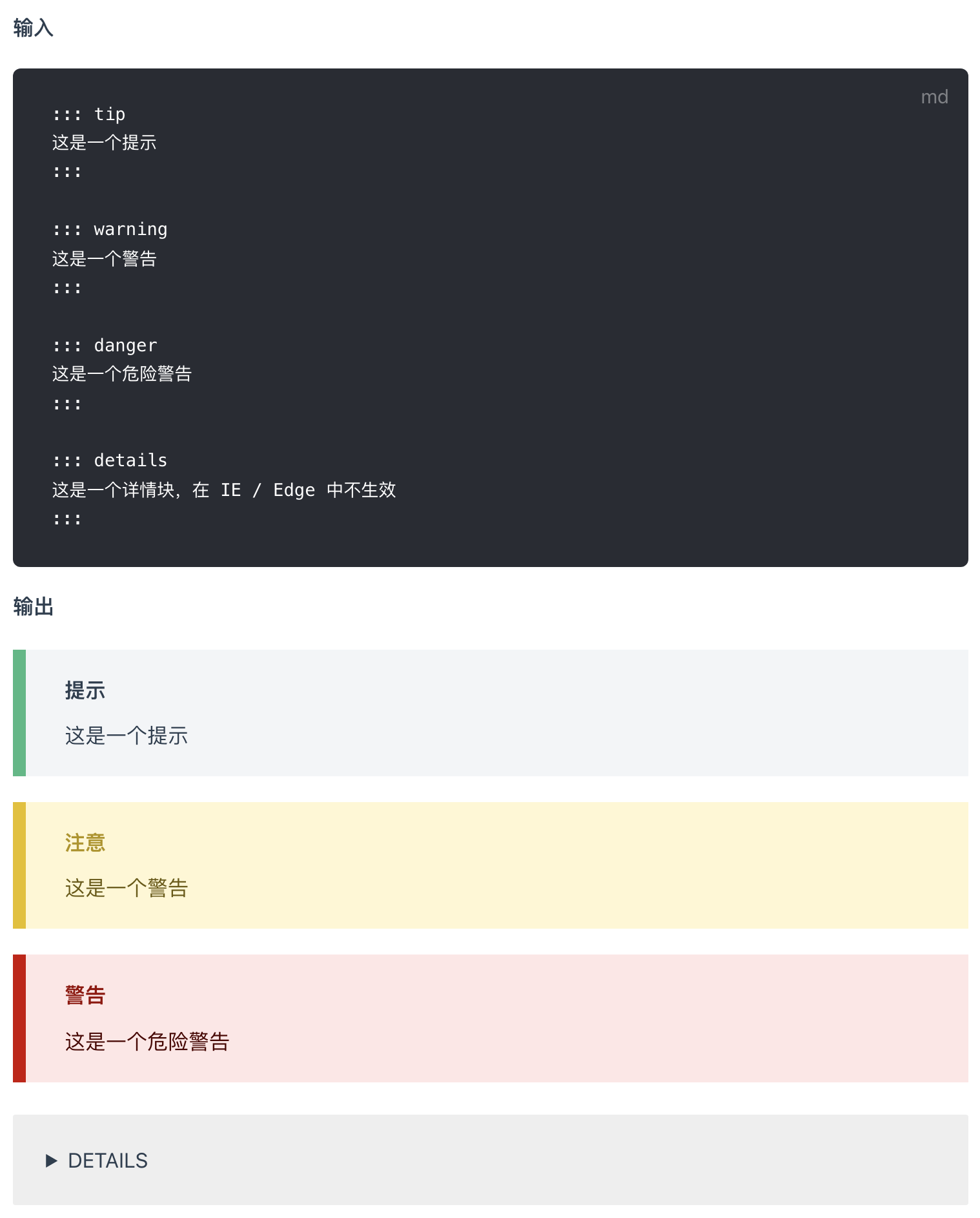在搭建博客的过程中,我们出于实际的需求,在《VuePress 博客优化之拓展 Markdown 语法》中讲解了如何写一个 markdown-it插件,又在 《markdown-it 原理解析》中讲解了 markdown-it的执行原理,本篇我们将讲解具体的实战代码,帮助大家更好的写插件。
markdown-it-inline
markdown-it 的作者提供了 markdown-it-inine 用于方便修改 inline tokens 。举个例子,如果我们给所有的链接添加 target=”_blank”,正常你需要这样写:
// Remember old renderer, if overridden, or proxy to default renderervar defaultRender = md.renderer.rules.link_open || function(tokens, idx, options, env, self) {return self.renderToken(tokens, idx, options);};md.renderer.rules.link_open = function (tokens, idx, options, env, self) {// If you are sure other plugins can't add `target` - drop check belowvar aIndex = tokens[idx].attrIndex('target');if (aIndex < 0) {tokens[idx].attrPush(['target', '_blank']); // add new attribute} else {tokens[idx].attrs[aIndex][1] = '_blank'; // replace value of existing attr}// pass token to default renderer.return defaultRender(tokens, idx, options, env, self);};
使用markdown-it-for-inline 后:
var iterator = require('markdown-it-for-inline');var md = require('markdown-it')().use(iterator, 'url_new_win', 'link_open', function (tokens, idx) {var aIndex = tokens[idx].attrIndex('target');if (aIndex < 0) {tokens[idx].attrPush(['target', '_blank']);} else {tokens[idx].attrs[aIndex][1] = '_blank';}});
如果我们要替换掉某个文字,也可以使用 markdown-it-for-inline:
var iterator = require('markdown-it-for-inline');// plugin params are://// - rule name (should be unique)// - token type to apply// - function//var md = require('markdown-it')().use(iterator, 'foo_replace', 'text', function (tokens, idx) {tokens[idx].content = tokens[idx].content.replace(/foo/g, 'bar');});
markdown-it-container
Plugin for creating block-level custom containers for markdown-it markdown parser.
markdown-it 的作者同样提供了 markdown-it-container 用于快速创建块级自定义容器。
有了这个插件,你可以这样使用 markdown 语法:
::: spoiler click me*content*:::
注意这其中的 ::: 是插件定义的语法,它会取出 ::: 后的字符,在这个例子中是 warning,并提供方法自定义渲染结果:
var md = require('markdown-it')();md.use(require('markdown-it-container'), 'spoiler', {validate: function(params) {return params.trim().match(/^spoiler\s+(.*)$/);},render: function (tokens, idx) {// 通过 tokens[idx].info.trim() 取出 'click me' 字符串var m = tokens[idx].info.trim().match(/^spoiler\s+(.*)$/);// 开始标签的 nesting 为 1,结束标签的 nesting 为 -1if (tokens[idx].nesting === 1) {// 开始标签return '<details><summary>' + md.utils.escapeHtml(m[1]) + '</summary>\n';} else {// 结束标签return '</details>\n';}}});
最终渲染的结果为:
<details><summary>click me</summary><p><em>content</em></p></details>
像 VuePress 提供了自定义容器:
其实就是用 markdown-it-container 实现的,其实现源码为:
const container = require('markdown-it-container')module.exports = md => {md.use(...createContainer('tip', 'TIP')).use(...createContainer('warning', 'WARNING')).use(...createContainer('danger', 'WARNING'))// ...}function createContainer (klass, defaultTitle) {return [container, klass, {render (tokens, idx) {const token = tokens[idx]const info = token.info.trim().slice(klass.length).trim()if (token.nesting === 1) {return `<div class="${klass} custom-block"><p class="custom-block-title">${info || defaultTitle}</p>\n`} else {return `</div>\n`}}}]}

